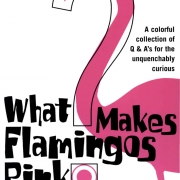Content Creators Need to Think Like Wolves
After re-visiting Michael Breus’ book The Power of When, I’ve concluded that, in order to create marketing content for a business or practice over the long-term, we need to think like wolves….
The book, based on circadian biology, explains that there is a best time for each of us to eat lunch, ask for a raise, write a novel, and take our meds, depending on our individual “chronotype”. 50% of people are Bears (who prefer a solar based schedule and have a high sleep drive). Dolphins are light sleepers, while Lions are morning-oriented. The author describes wolves as “night-oriented creative extroverts” with a medium sleep drive.
From a content-marketing point of view, a key clue may be found on Page 77 of Breus’ book, where the author notes that “wolves see every situation from multiple vantage points”. The big thing about content marketing, I’ve often explained to business owners and professional practitioners, is learning how to keep on keeping on. No doubt about it, sustaining content writing over long periods of time without losing reader (or writer!) excitement is the real challenge, one that “wolves” are best equipped to handle using their ability to approach the topic from “multiple vantage points”.
- In order to add variety, I teach content writers to experiment with different formats, including how-to posts, list posts, opinion pieces, and interviews.
- Different articles can present the same business from different vantage points, “featuring” different employees and different departments within the company.
- Individual posts – or series of posts – can be tailored to different segments of the customer base.
- Different pieces of content can offer valuable information and advice relating to different aspects of the business’ or the practice’s product or service offerings.
While “wolves are creative and completely open to trying new things,” the author cautions, “they do run into some trouble sticking with it”. Breus’ advice? “Be spontaneous about the direction you choose, so long as you take walks and eat meals on your correct bio time.”
My own advice, meanwhile, is that sustaining an engaging business blog over the course of years is very do-able – so long as you stay engaged. Keep learning by “reading around” – books, blogs, articles, magazines, almanacs – you name it, all to stay aware of developments, cultural changes, even controversies.
Whatever your circadian biology, in content writing, it helps to think like a wolf!






Follow us online!